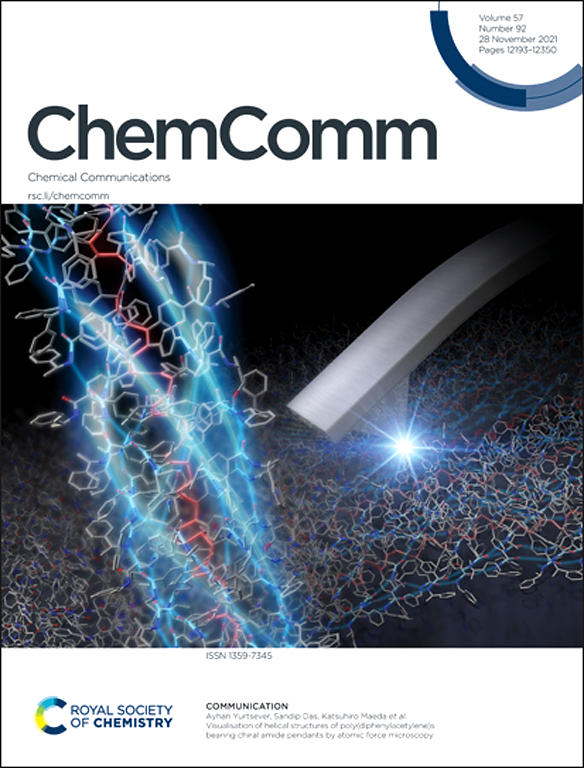Accurately constituting robust interfaces for high-performance high-energy lithium metal batteries
IF 4.2
2区 化学
Q2 CHEMISTRY, MULTIDISCIPLINARY
引用次数: 0
Abstract
High-energy lithium metal batteries (LMBs) have received ever-increasing interest. Among them, coupling lithium metal (Li) with nickel-rich material, LiNixMnyCozO2 (NMCs, x ≥ 0.6, x + y + z = 1), is promising because Li anodes enable an extremely high capacity (∼3860 mA h g−1) and the lowest redox potential (−3.04 V vs. standard hydrogen electrode), while NMCs can achieve a much higher capacity of ∼200 mA h g−1 and lower cost than those of LiCoO2. However, the resultant Li‖NMC cells have been hindered from commercialization due to a series of challenges related to the interface stability of both Li anodes and NMC cathodes. Specifically, Li anodes suffer from Li dendritic growth and the formation of solid electrolyte interphase (SEI), while NMC cathodes suffer from the formation of cathode electrolyte interphase (CEI) and other interface-related issues, including transition metal dissolution, oxygen release, cracking, and so on. To tackle these issues, recently, two sister techniques, atomic and molecular layer deposition (ALD and MLD), have emerged and exhibit tremendous capabilities to accurately constitute robust interfaces to achieve high-performance Li‖NMC LMBs. They can uniquely develop uniform and conformal films as surface coatings of LMBs in a precisely controllable mode at the atomic/molecular level, while proceeding with film deposition at low temperatures (e.g., ≤250 °C). In this Feature Article, we review the latest research progress in developing novel surface coatings via ALD and MLD for Li‖NMC LMBs and discuss outcomes for pursuing high performance.

准确构建高性能高能锂金属电池的坚固界面
高能锂金属电池(lmb)受到越来越多的关注。其中,锂金属(Li)与富镍LiNixMnyCozO2 (NMCs, x≥0.6,x + y + z = 1)耦合是很有前途的,因为Li阳极具有极高的容量(3860 mAh g-1)和最低的氧化还原电位(与标准氢电极相比- 3.04 V),而NMCs可以实现更高的容量(200 mAh g-1)和更低的成本。然而,由于一系列与Li阳极和NMC阴极的界面稳定性相关的挑战,由此产生的Li||NMC电池的商业化受到阻碍。具体来说,Li阳极受到Li枝晶生长和固体电解质界面相(SEI)形成的困扰,而NMC阴极受到阴极电解质界面相(CEI)形成的困扰,以及其他与界面相关的问题,包括过渡金属溶解、氧释放、开裂等。为了解决这些问题,最近出现了两种姐妹技术,原子和分子层沉积(ALD和MLD),并显示出巨大的能力,可以精确地构建坚固的界面,以实现高性能Li||NMC lmb。他们可以独特地在原子/分子水平上以精确可控的模式开发均匀和保形的薄膜作为lmb的表面涂层,同时在低温(例如≤250℃)下进行薄膜沉积。在这篇专题文章中,我们重点介绍了通过ALD和MLD开发Li b| NMC lmb表面涂层的最新研究进展,并讨论了我们在追求其高性能方面的成果。
本文章由计算机程序翻译,如有差异,请以英文原文为准。
求助全文
约1分钟内获得全文
求助全文
来源期刊

Chemical Communications
化学-化学综合
CiteScore
8.60
自引率
4.10%
发文量
2705
审稿时长
1.4 months
期刊介绍:
ChemComm (Chemical Communications) is renowned as the fastest publisher of articles providing information on new avenues of research, drawn from all the world''s major areas of chemical research.
 求助内容:
求助内容: 应助结果提醒方式:
应助结果提醒方式:


